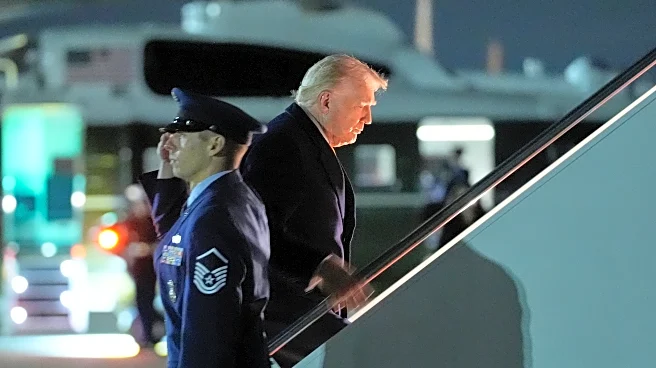What's Happening?
The United States has pledged a $20 billion bailout for Argentina through the Exchange Stabilization Fund, a mechanism not widely known. This fund was created to stabilize the U.S. dollar and is now being used to support Argentina's struggling economy.
The bailout aims to provide financial relief to Argentina, which is facing significant economic challenges. The fund's use in this context raises questions about Argentina's ability to repay the loan and the broader implications for U.S. financial policy.
Why It's Important?
The U.S. decision to use the Exchange Stabilization Fund for Argentina's bailout highlights the interconnectedness of global economies and the U.S.'s role in international financial stability. This move could strengthen diplomatic ties between the U.S. and Argentina but also poses risks if Argentina struggles to repay the loan. The use of this fund in such a significant bailout underscores the U.S.'s commitment to supporting global economic stability, but it also raises concerns about the potential strain on U.S. financial resources.
What's Next?
Argentina's economic recovery and ability to repay the bailout will be closely monitored. The U.S. may face scrutiny over the decision to use the Exchange Stabilization Fund in this manner, potentially leading to discussions about its future use. The outcome of this bailout could influence future U.S. financial aid decisions and international economic policies. Stakeholders will watch for any shifts in Argentina's economic policies and their impact on the country's financial stability.















